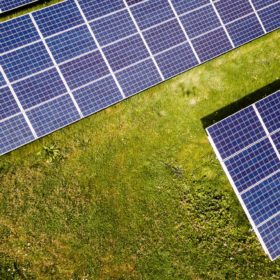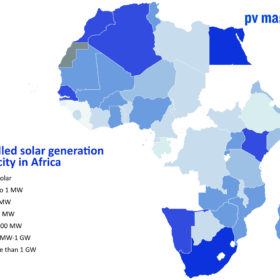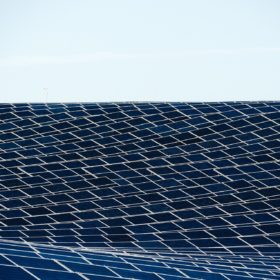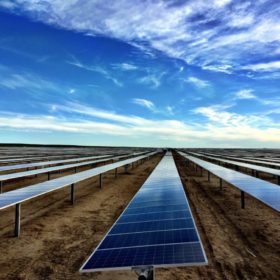Comparing new solar module formats
JA Solar published data comparing its own modules, based on the 182mm wafer format, with others utilizing the larger 210mm size over a six month period in field testing. The data show that the smaller of the two formats reached an average daily energy yield almost 2% higher. According to JA Solar’s analysis, the higher currents produced by the 210mm modules led to higher resistance, and more energy lost as heat.
Current affairs
A new white paper published by Chinese module giant JA Solar examines the performance of new large format modules, and compares products based on the two different wafer sizes, 182mm and 210mm, that are set to dominate the market for the coming years. Thanks largely to the impact of very high currents present in the larger of the two options, JA Solar finds that the 182mm products offer a slight advantage in performance. Further, JA notes that any further increases in size would come with more risk than reward, and calls on the industry to return its focus to reaching higher cell efficiencies and yields through new materials and innovations.
Chinese PV Industry Brief: Longi leapfrogs Jinko for first-half module shipments
There is also news of a 1.1 GW central inverter procurement contract, a pending IPO for solar cell player Runergy, and a $700 million-plus solar glass supply contract.
Jinko and JA Solar to invest $100m in 100,000-ton polysilicon fab
The two solar manufacturers will get priority access to polysilicon produced at the planned fab in Inner Mongolia, which developer Xinte Energy has said will be fully operational by June 2023.
Chinese PV Industry Brief: Longi expands into hydrogen, Eging PV secures 280 MW order
Monocrystalline module manufacturer Longi is venturing into new territory but missed out to its rival on two big panel orders from a state-owned power company.
Xinte highlights Chinese polysilicon ‘oligopoly’
The TBEA-owned poly manufacturer has predicted further consolidation as it aims to ramp up output with another 100,000 tons of annual production capacity.
African green hydrogen could feed German and Japanese industry and water drought-stricken nations
Trade bodies the Africa Solar Industry Association and the African Hydrogen Partnership hosted a two-day virtual conference to discuss the role green hydrogen can play in economic growth across the continent–and how it could drive desalination in freshwater-starved coastal countries.
JA Solar unveils 415 W solar module with 21.3% efficiency
The module can be used for residential and commercial PV projects. It is available in five versions with power outputs claimed by the company of 390-415 W and reported efficiencies of 20.0-21.3%.
Jenny Chase predicts up to 194 GW of solar this year
Falling module prices will help PV post another record year after an estimated 132 GW was installed worldwide in 2020, according to an energy transition investment trends report published by Bloomberg New Energy Finance.
About 9.7 GW of large-scale PV set for 2021 delivery in US market
Across the United States, more than three dozen solar projects with nameplate capacities of at least 100 MW are set to enter service in 2021. The Texas oil patch is on track to host the largest of them.









